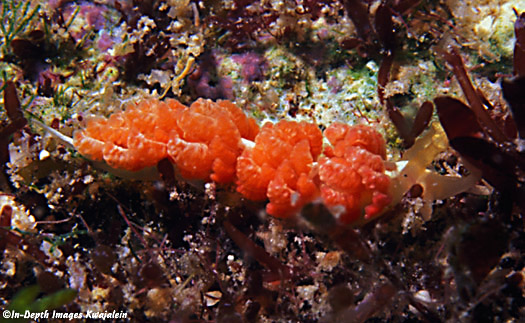
Many specimens have been found at Enewetak and Kwajalein Atolls on lagoon reefs, pinnacles, and on the seaward reef. They are often found in small groups eating the eggs of other opisthobranch mollusks, and their highly variable colors generally reflect the colors of the eggs they have been eating. We have found them eating the eggs of Hexabranchus lacer, Dendrodoris nigra, and Dolabella auricularia, among others. Favorinus japonicus was first reported in the Marshalls from Enewetak and Kwajalein Atolls by Johnson & Boucher (1984).

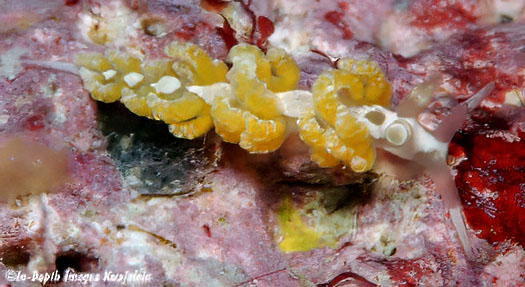
These three from Kwajalein are finishing up an unidentified egg mass.
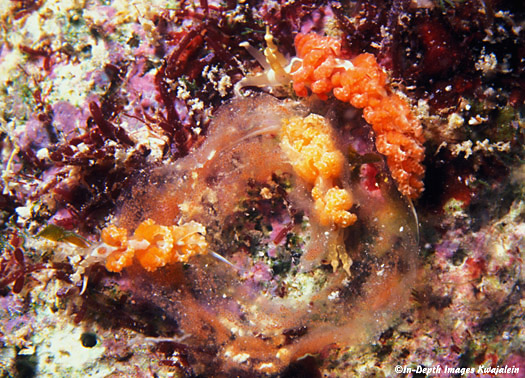
This specimen is on the egg mass of Dendrodoris nigra. The Dendrodoris was still under the same rock.
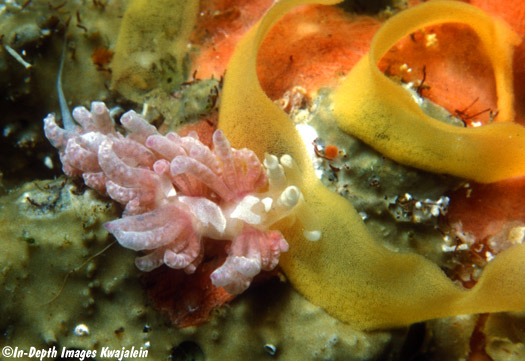
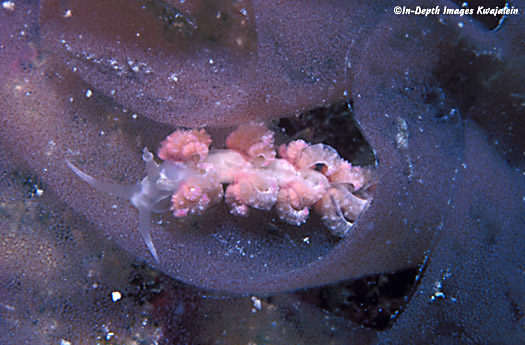
That's quite a long tail.
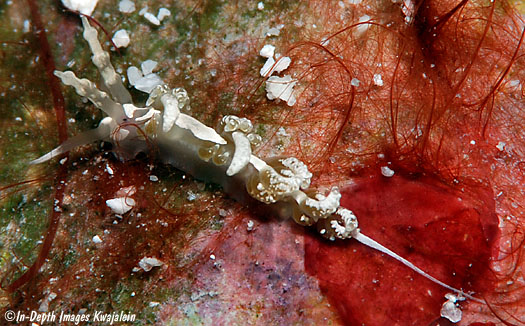
Favorinus japonicus may deposit its own eggs, the small white tight spiral below, on the opisthobranch egg mass it is eating.
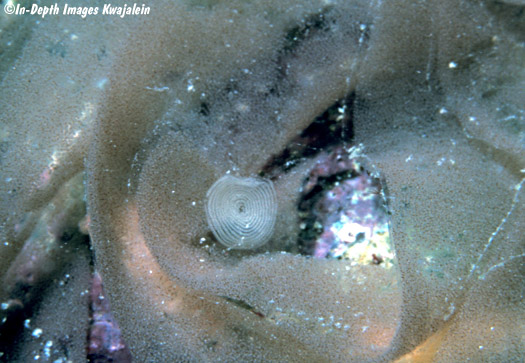
And another egg mass of its own under a rock.
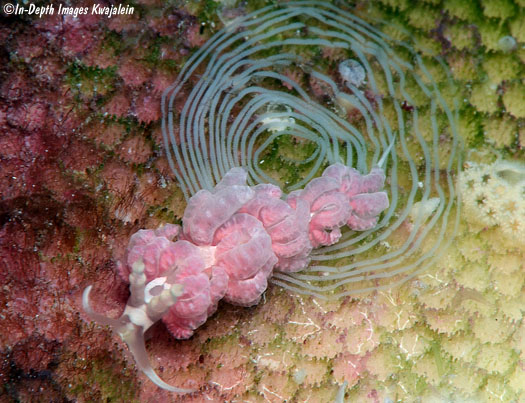
The photo below was shot on 5 October 2008 of an egg mass being eaten by both Favorinus japonicus and F. mirabilis. There were initially two of each species on the mass, but one of the F. mirabilis had crawled away by the time this photo was taken. Many of the eggs appear to have already been eaten. There is a pink F. japonicus crawling away just below the egg mass, and a white one curled up in the center. A small egg mass, possibly from one of the Favorinus, can be seen just above the larger mass being eaten.
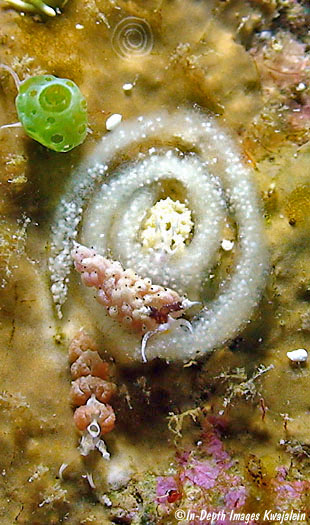
The white specimen from the center of the egg mass above is seen in the closer shot below.
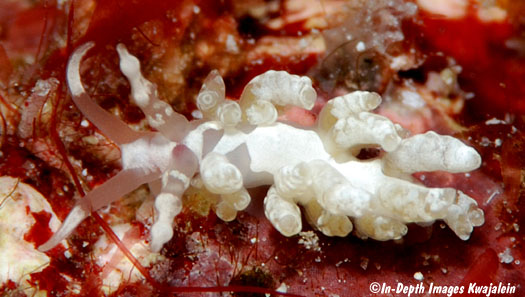

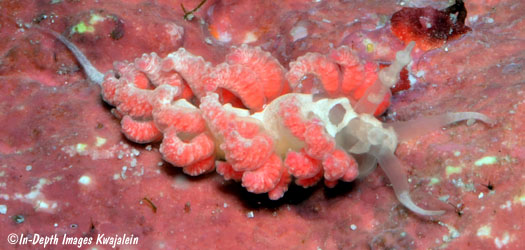
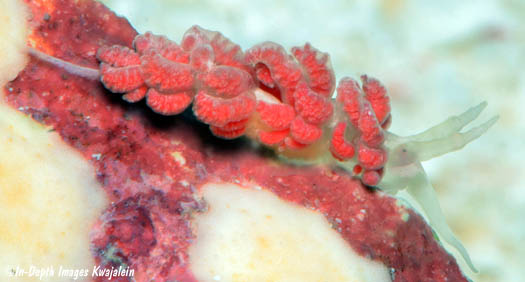
The yellow one below was in a Kwajalein reef quarry under a rock in about a meter of water on 3 October 2015.
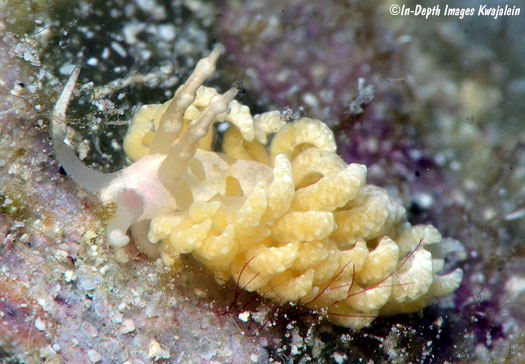
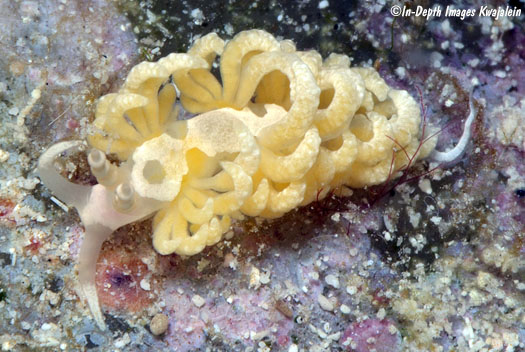
This one was among and probably eating the eggs of Phestilla lugubris.
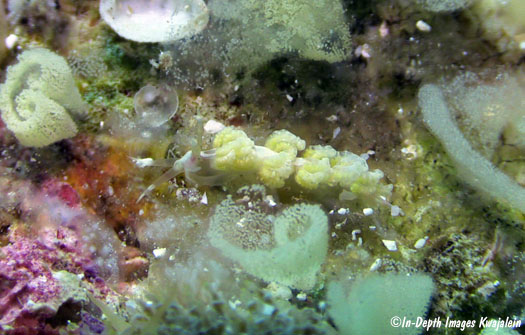
Yet another color form, this one on eggs that appear to be from a sea hare. It illustrates how the digestive cores in the cerata fill with the color of whatever the animal is eating.
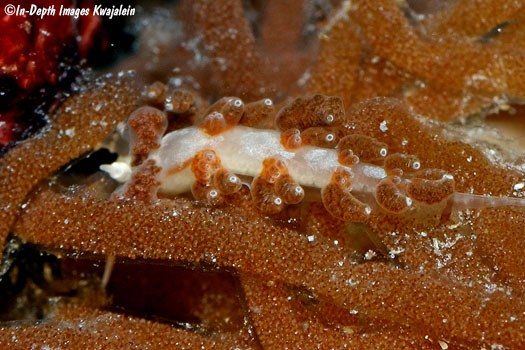
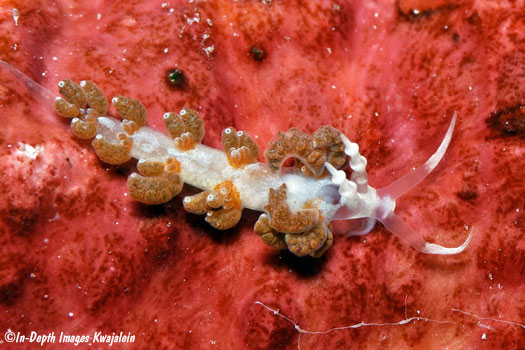
Created 8 January 2007
Updated 7 August 2020